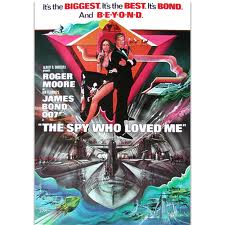- What is Reverse Innovation:
- It is an innovation seen first, or likely to be used first, in the poor nations and then extended to rich nations. Rich and poor nations being classified based on the GDP bar as set by United Nations.
- So, if an innovation springs up in India and if it is applied to US it becomes reverse innovation
- If it works here, it will work anywhere: The speaker presented a few examples from healthcare industry that illustrated the above point, emphasizing that low cost does not mean low quality. Infact, that it worked in India or Thailand, means that the product is world class, due to the extreme conditions this product is put to use.
- A low cost ECG machine from GE (Though developed for $2/per day earning rural Indian, now finds place in the high way ambulances in US, where installing a million dollar ECG machine along with a high skilled technician does not make sense.)
- World class Heart surgeries in India for a fraction of cost that has paved way to the medical tourism model. Infact, now in Cayman Islands, there is a project that is being developed where people from US can travel to and get their surgeries done for a fraction of cost
- Narayana Hrudalaya performs a heart surgery for less than $2000, that takes typically $50,000 in a leading hospital in India
- But the quality is still the best because of the equipment that is used and the demanding customers we have in India. (Indians are supposed to have weak(est) of hearts)
- 60% of patients are treated free, but interestingly remaining 40% makes this hospital to still enjoy over 45% of gross margin!!
- A low cost artificial limb (Though developed for Thailand, now is being marketed world-wide. Further they have perfected the model of training the amputees fitted with artificial limbs to fit the limbs for new patients, thus obviating the need for high skilled technicians as in US)
- Stop thinking like an American: Further he presented the following that could be eye openers to companies when they extend to emerging markets.
- A project for low cost house ($US 300) which is building momentum through a web project (http://www.300house.com/)
- How channels like ESPN could benefit when they drop the US eye-lens and stop using the same market segmentation as in US and figure out India-specific segments to better sell their services.
- How companies like Kellog could benefit from understanding Indian way of consuming cereals with hot milk etc…
- Be in India and Be an Indian is the mantra for Global companies
- Focusing on India and its consumer is the way forward.
- Innovation is not value for money, but value for many
- Globalization of ideas is the key–and reverse innovation will help you do it. Innovation isn’t meant to be hugely capital intensive. It can come from meager budgets and poor countries. Rich countries, large budgets is old school thinking
- Master innovation for Indian consumer and you will have a global winner
- When the terrain is tough and the villain is on the run, Rajnikanth chose a horse to chase down a Mercedes Benz!! That is innovation at its best.
- Finally, innovation should aim at addressing the inequality in the world through ultra-low cost, high quality and global products. Amen!
My observations
- This speaker’s mentor/idol C.K.Prahlad came up with a concept called “The bottom of the pyramid”, which is about how new markets can be found while productizing for poor people (shampoo sachets, cheap phone rates through pre-paid cards etc). Reverse innovation is one step forward–how can such innovation be extended globally
- If whatever works in India works globally, does it mean that a block buster like ”Magadheera” or “3 Idiots” can appeal to world wide audiences? Did Thai/Korean/Chinese movie companies cracked it already?





